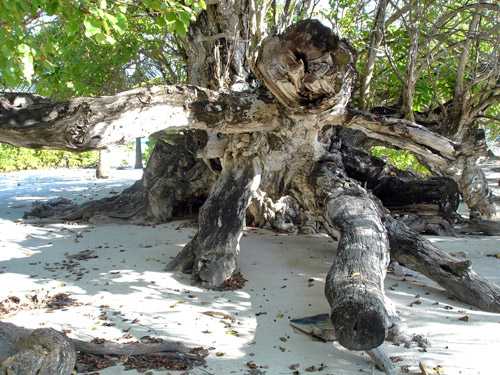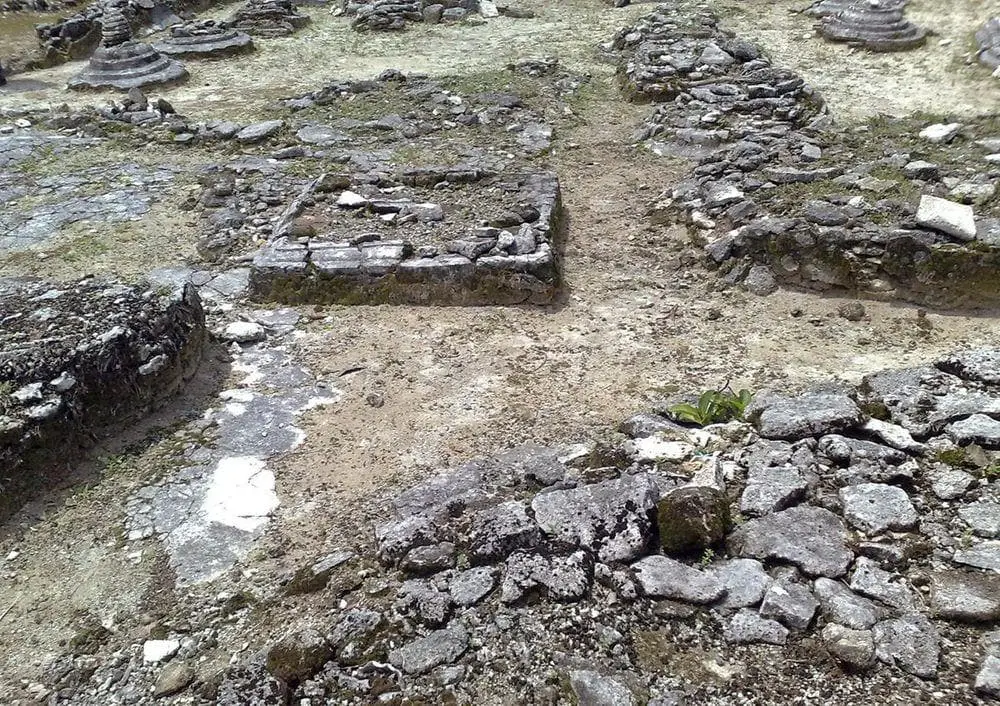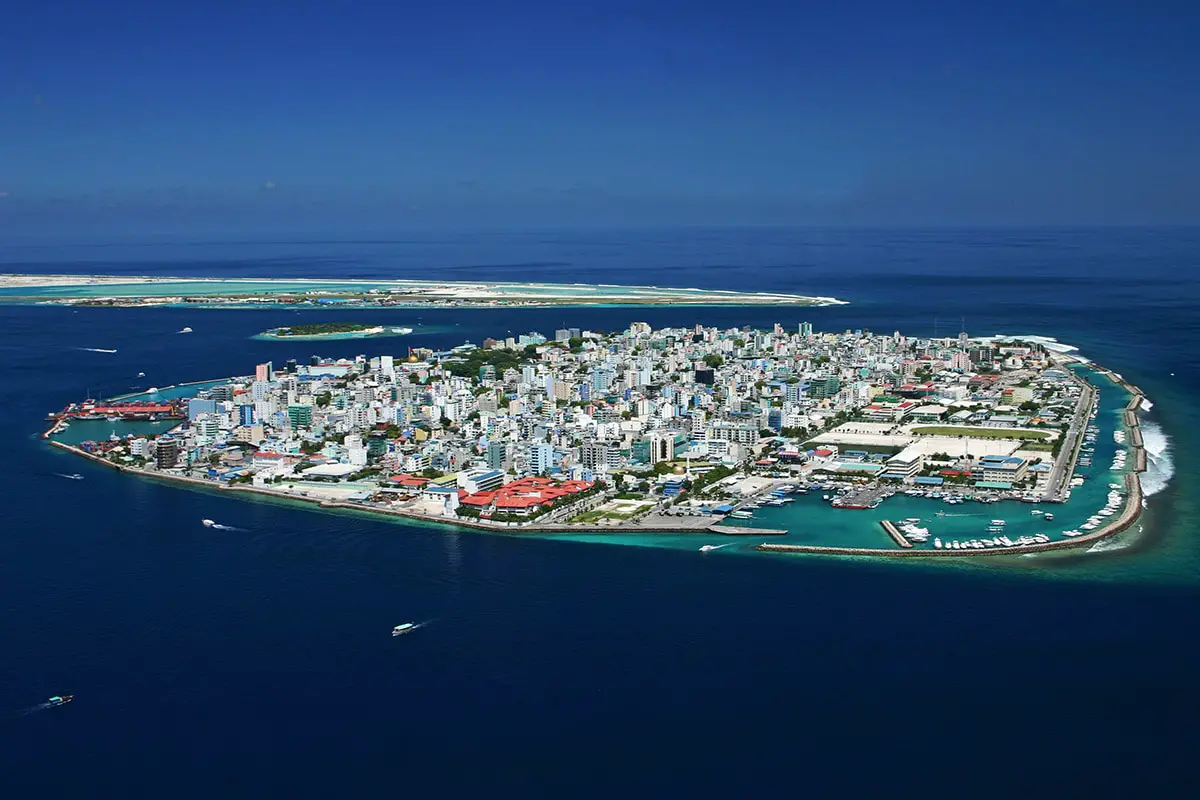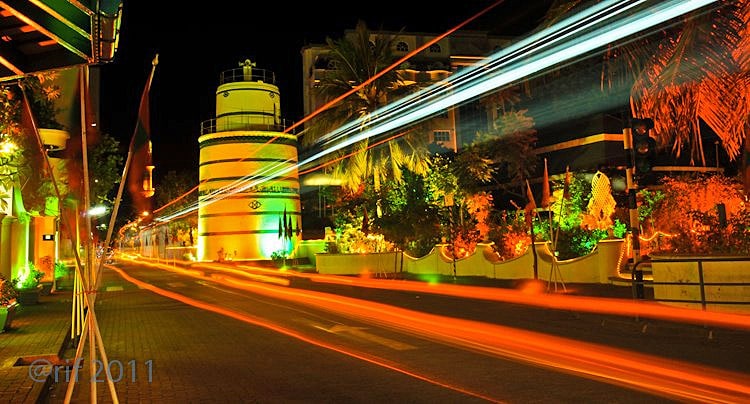Wondermondo 🢖 World 🢖 Wonders of Asia 🢖 Wonders of Maldives
Territory
Wonders of Maldives

 Highlights
Highlights
The Maldives are low-lying coral islands with some of the largest atolls in the world. In fact, word "atoll" itself comes from Dhivehi – Maldivian language.
Besides the rich marine life wonders of Maldives are the somewhat mysterious Buddhist landmarks. Since the introduction of Islam, the Buddhist (and possible Hinduist) heritage of Maldives has been deliberately demolished and this continues up to this day.
There are several old and ornate mosques on the islands as well.
Map with the described wonders of Maldives
If you see this after your page is loaded completely, leafletJS files are missing.
 Top 21 wonders of the Maldives
Top 21 wonders of the Maldives
Biological wonders
Hanifaru Bay
Place with one of the largest gatherings of manta rays in the world – even one hundred individuals can be observed at once. One of the few places in the world where gatherings of whale sharks can be observed.
Kaani tree in Maroshi
Enormous and legendary kaani tree (Cordia subcordata), reportedly grown from a pole that was driven and used for anchoring the ships of Maldivian freedom fighter Sultan Mohamed Thakurufaanu in the 16th century.

Archaeological wonders
Isdhoo Buddhist stupas
Some of the most impressive Buddhist landmarks in Maldives. On the island were found Lōmāfānu – copperplate sheets – that contained ancient royal edicts that testify to the transition of Maldives from Buddhism to Islam.
Kuruhinna Tharaagandu
Remnants of an old, complex Buddhist temple that has been built in several stages from the 3rd to the 9th century AD. This testifies that Buddhism existed in the Maldives for a long time. Thus far unearthed remnants of 64 coral-stone structures. Here have been found sacrifices – remnants of Aldabra giant tortoise (Aldabrachelys elephantina), thus it is possible that these tortoises lived in the Maldives or other islands closer than Aldabra.

Vadiyaamagu Hawitta
Enormous Buddhist stupa that rises as a pyramid above the forest.
Nilandhoo Havitta
Ruins of a Buddhist shrine from around the 8th century AD.
Thoddoo Buddhist temple (Toddu)
Well-preserved ruins of a Buddhist temple. Buddha statue was carefully buried nearby, thus testifying that locals were expecting that Buddhism may return here. Here was found also Roman coin from 90 BC and golden, and silver items.
Fua Mulakku Havitta
12 m tall mound of a Buddhist temple, one of the largest prehistoric monuments in Maldives. Stones of the structure are decorated with intricate patterns.
Maabadhige Haitha in Landhoo
Mound – ruins of a Buddhist stupa with a diameter of 90 m and 8.5 m high. Contains the oldest script in the Maldives, possibly from the 6th – 8th centuries AD.
Gamu Haviththa in Gan
Site of a possible Buddhist temple, 73 m in circumference and 18 m high. Gan island has several other mounds up to 9 m high.
Gamu Haiytheli
Ruins of a prehistoric Buddhist temple, now represent a hill with a circumference of 91.5 m, 7.3 m high. The site has been vandalized and there is little to see now.
Dhanbidhoo Buddhist monuments
Comparatively large ruins of Buddhist structures – a monastery and temples. Here were found Lōmāfānu – royal edicts incised in copper plates. These plates were made in the late 12th century AD and inform about the transition from Buddhism to Islam.
Dhevvadhoo Buddhist temples
This small island had high importance in the Maldives before the introduction of Islam. Here are located several remnants of Buddhist stupas and unexplored mounds.
Ariadhoo Buddhist stupa
On this island were located several mounds. In one of them in 1959 was discovered a symbol of a phallus that was carved from a coral stone.
Architecture wonders
Ithaa
The world’s first undersea restaurant, built in 2005. A transparent roof allows a panoramic undersea view.
Idu Miskit
Important, ornate mosque. The time of the construction is unknown, large rebuilding took place in 1799 – 1835.
Malé Friday Mosque (Malé Hukuru Miskiy)
Beautiful, old mosque. Constructed in 1153 from coral stone, the surface of the stone is covered with intricate carvings. Rebuilt and extended in later times. Contains valuable artwork. Surrounded by a graveyard with unique tombstones.
Muliaage
Former official residence of the President of Maldives, a palace-like structure constructed in 1914 – 1919. The building has interesting architecture and ornamentation.
Darumavanta Rasgefanu Mosque
The oldest mosque in Maldives. It was built sometime around 1153. A simple building with a finely carved portal.
Malé
The capital city of Maldives since ancient times, one of the most densely built small islands in the world.

Aasari Miskiiy
The second oldest mosque in Maldives, built in 1153 – 1166. The building is well crafted from stone blocks, with an ornamented interior.
 Recommended books
Recommended books
Maldives: The Very Best of Michael Friedel
With his incomparable photographs of the Maldive Islands, Michael Friedel, one of Germany’s leading photojournalists, has made the breathtaking beauty of these jewels of the Indian Ocean famous throughout the world. His aerial views of the Maldives have given a new perspective of their home to the islanders themselves. On the 10th anniversary of the Maldive independence, his pictures were used in a series of postage stamps. For over twenty years Michael Friedel has been taking photographs of these tropical atolls on land, underwater, and from the air.
The Maldive mystery
One of the world’s foremost explorers investigates the origins of Maldive history and discovers that the seemingly remote and insignificant islands on the Indian Ocean once formed a crucial crossroads for early pre-European civilizations.




who else is here for a school project